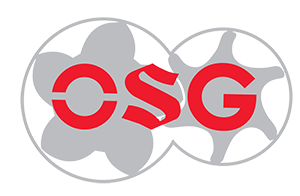Bearings are the most important supporting parts of motors. Under normal circumstances, when the temperature of the motor bearings exceeds 95°C and the temperature of the sliding bearings exceeds 80°C, the bearings are overheated.
Bearing overheating when the motor is running is a common fault, and its causes are various, and sometimes it is difficult to diagnose accurately, so in many cases, if the treatment is not timely, the result is often more damage to the motor, making the motor The life span is shortened, which affects work and production. Summarize the specific situation, reasons and treatment methods of motor bearing overheating.
1. Reasons and treatment methods for overheating of motor bearings:
1. The rolling bearing is installed incorrectly, the fit tolerance is too tight or too loose.
Solution: The working performance of rolling bearings depends not only on the manufacturing accuracy of the bearing itself, but also on the dimensional accuracy, shape tolerance and surface roughness of the shaft and hole that match it, the selected fit and whether the installation is correct or not.
In general horizontal motors, well-assembled rolling bearings only bear radial stress, but if the fit between the inner ring of the bearing and the shaft is too tight, or the fit between the outer ring of the bearing and the end cover is too tight, that is, when the tolerance is too large, then after assembly The bearing clearance will become too small, sometimes even close to zero. The rotation is not flexible like this, and it will generate heat during operation.
If the fit between the bearing inner ring and the shaft is too loose, or the bearing outer ring and the end cover are too loose, then the bearing inner ring and the shaft, or the bearing outer ring and the end cover, will rotate relative to each other, resulting in friction and heat, resulting in bearing failure. overheat. Usually, the tolerance zone of the inner diameter of the bearing inner ring as a reference part is moved below the zero line in the standard, and the tolerance zone of the same shaft and the inner ring of the bearing form a fit that is much tighter than that formed with the general reference hole .
2. Inappropriate selection of lubricating grease or improper use and maintenance, poor or deteriorated lubricating grease, or mixed with dust and impurities can cause the bearing to heat up.
Solution: Adding too much or too little grease will also cause the bearing to heat up, because when there is too much grease, there will be a lot of friction between the rotating part of the bearing and the grease, and when the grease is added too little, dryness may occur Friction and heat. Therefore, the amount of grease must be adjusted so that it is about 1/2-2/3 of the space volume of the bearing chamber. The unsuitable or deteriorated lubricating grease should be cleaned and replaced with suitable clean lubricating grease.
3. The axial gap between the outer bearing cover of the motor and the outer circle of the rolling bearing is too small.
Solution: Large and medium-sized motors generally use ball bearings at the non-shaft end. Roller bearings are used at the end of the shaft extension, so that when the rotor is heated and expanded, it can elongate freely. Since both ends of the small motor use ball bearings, there should be a proper gap between the outer bearing cover and the outer ring of the bearing, otherwise, the bearing may heat up due to excessive thermal elongation in the axial direction. When this phenomenon occurs, the front or rear side bearing cover should be removed a little, or a thin paper pad should be placed between the bearing cover and the end cover, so that a sufficient space is formed between the outer bearing cover at one end and the outer ring of the bearing. Clearance.
4. The end covers or bearing caps on both sides of the motor are not installed properly.
Solution: If the end covers or bearing covers on both sides of the motor are not installed in parallel or the seams are not tight, the balls will deviate from the track and rotate to generate heat. The end caps or bearing caps on both sides must be reinstalled flat, and evenly rotated and fixed with bolts.
5. Balls, rollers, inner and outer rings, and ball cages are severely worn or metal peeling off.
Solution: The bearing should be replaced at this time.
6. Poor connection to load machinery.
The main reasons are: poor assembly of the coupling, excessive pull of the belt, inconsistency with the axis of the load machine, too small diameter of the pulley, too far away from the bearing of the pulley, excessive axial or radial load, etc.
Solution: Correct the incorrect connection to avoid abnormal force on the bearing.
7. The shaft is bent.
Solution: At this time, the force on the bearing is no longer pure radial force, which causes the bearing to heat up. Try to straighten the bent shaft or replace it with a new bearing
2. How to protect the motor bearing from overheating?
It can be considered to bury the temperature measuring element near the bearing, and then protect the bearing through the control circuit. Download Generally, the motor has a temperature measuring element (such as a thermistor) inside the motor, and then 2 wires come out from the inside to connect to a special protector, and the protector sends a constant 24V voltage, when the motor bearing When the overheating exceeds the set value of the protector, it will trip and play a protective role. At present, most motor manufacturers in the country use this protection method.
Post time: Jun-25-2023








